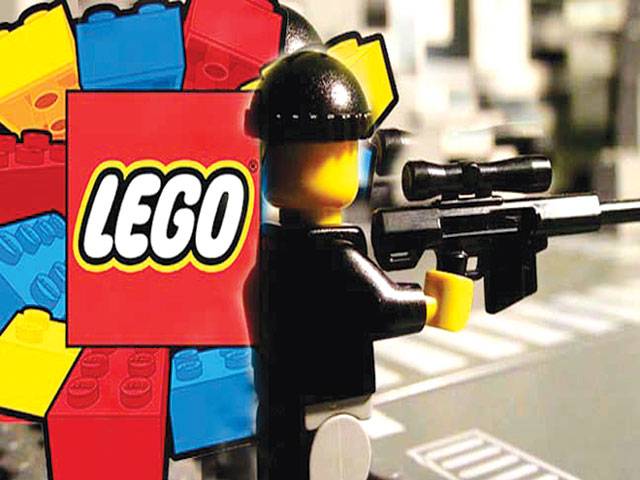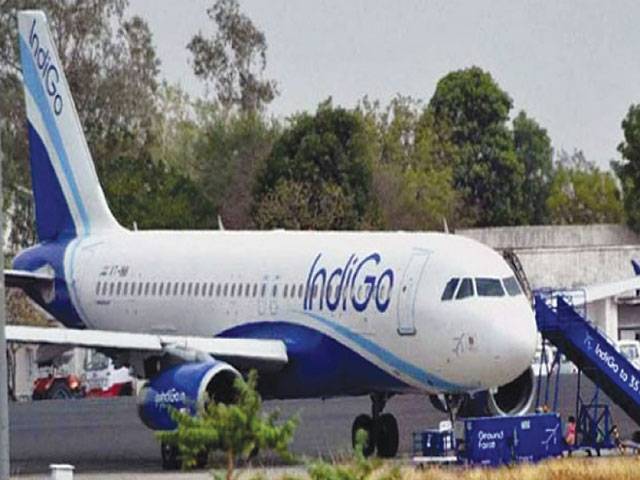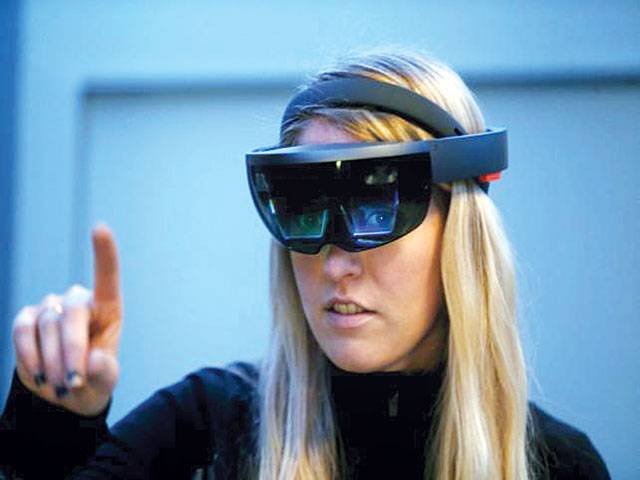Toy ‘arms race’ turning Lego violent: Study
WELLINGTON (AFP): Lego products are becoming increasingly violent as toymakers engage in an “arms race” to retain children’s attention in the digital age, New Zealand researchers said Monday.
The University of Canterbury team said child’s play was becoming more brutal, with a higher proportion of weapons appearing among Lego’s building blocks and war-like scenarios featuring in its themed kit sets.
“The Lego company’s products are not as innocent as they used to be,” lead researcher Christoph Bartneck said. “The violence in Lego products seems to have gone beyond just enriching game play.”
In a peer-reviewed study published by the online journal PLOS ONE, the researchers concluded that Lego “showed significant exponential increases of violence over time”.
While Denmark-based Lego has been making plastic building blocks since 1949, the study found its first weapons were issued in 1978 when a castle kit included swords, axes and lances.
An analysis found that weapons had steadily become more commonplace and were now included in 30 percent of Lego kits.
Bartneck said the percentage was probably higher as the data included only small, single-brick weapons, not items such the best-selling Star Wars’ Death Star, which in itself is a giant planet-destroying ray blaster.
In addition, the research examined Lego catalogues from 1973 to 2015 and found the scenarios depicted in the company’s kits had become more violent.
“Currently, around 40 percent of all pages contain some type of violence - in particular, scenarios involving shooting and threatening behaviour have increased over the years,” it found. “The atmosphere of the violent acts is predominantly perceived as exciting.”
The study said Lego was simply reflecting a broader trend in children’s entertainment. “To catch the attention of their customers, toy manufacturers are similarly locked in a metaphorical arms race for exciting new products,” it said.
Bartneck also conducted separate research released in 2013 which found the number of angry expressions on Lego figures was rising as the number of happy faces declined.
Lego has radically reinvented itself since it almost went bankrupt in 2003-4 as electronic games threatened its future.
The privately-held company embarked on a bold strategy to embrace popular culture while shedding “non-core” activities such as clothing lines and the Legoland theme parks.
Instead it began selling themed kits linked to popular movie franchises such as Star Wars, Batman and Harry Potter.
It also created light-hearted computer games and animation along the same lines, paying off when “The Lego Movie” was a surprise hit in 2014.
The result has been 11 straight years of growth, with the company announcing earlier this year that net profit in 2015 soared 31 percent to 9.2 billion Danish kroner (1.2 billion euros; US$1.4 billion).
Lego said it was a record-breaking year for the brand, with an estimated 100 million children in 140 countries playing with Lego bricks and other toys.
Lego spokesman Troy Taylor said the company’s products promoted a range of play activities such as construction, fantasy and conflict. “As with other play types, conflict play is a natural part of a child’s development,” he said.
Taylor said weapons in Lego were always used for a broader purpose, such as saving the world, and character was emphasised over firepower. “We always try and use humour where possible as it helps tone down the level of conflict.”
Drone captures shark feeding frenzy on whale
SYDNEY (AFP): A drone has captured a bloody feeding frenzy by around 70 tiger sharks on a dead whale, turning the pristine waters of the aptly named Shark Bay in Australia red. Two boatloads of tourists were on a cruise to Dirk Hartog Island in Western Australia when they came across the gruesome spectacle on Friday. Geraldton-based Eco Abrolhos Cruises sent up a drone to record nature taking its course. The footage showed the sharks ripping the giant humpback whale carcass to shreds, leaving a trail of crimson water. “Something to show and tell the grandchildren,” the company said on its Facebook page after posting the footage, which had been viewed nearly half-a-million times by Monday.
Passenger Leesa Franks said on the social media site: “We liked, liked, liked. Awesome day yesterday, thanks so much.”
Shark Bay is a World Heritage-listed area some 800 kilometres (500 miles) north of Perth. It is known for its large marine animals including whales, sharks, dolphins, dugongs and turtles.
India cages endangered lions after fatal attacks
AHMEDABAD (AFP): Thirteen endangered Asiatic lions that only live in a forest in western India have been caught and caged after three villagers were killed in recent months, a wildlife official said Monday. The pride of lions has been rounded up from Gir sanctuary in Gujarat state after at least one of the animals last week dragged a teenager from his village while he was sleeping and killed him. Gujarat’s chief conservator of forests, J A Khan, said the lions were captured in recent days from an eastern part of the protected forest in a bid to find the “man-eaters” responsible. Khan said it was unclear why or how many of the cats had ventured outside of the sanctuary, their last remaining natural habitat, to find prey, describing the attacks as rare.
“Lions that have preyed upon humans will be analysed in detail, while the rest will be slowly introduced back into the wild,” Khan told AFP.
“We will be doing a scat analysis which includes testing the animals’ faeces for human tissues, chemical analysis of their blood and even genetic analysis,” he said.
The cats, slightly smaller than their African cousins and with a fold of skin along their bellies, have been increasing in numbers in Gir, with 523 recorded in the latest census.
Conservationists have suggested some of the lions be relocated to a different sanctuary, to reduce human-animal conflict and avoid being wiped out by disease or natural disaster.
In the latest attack, the 14-year-old boy was dragged from his sleeping spot in a mango orchid in Ambardi village near the forest on May 20. His father was also injured while trying to scare the animal away.
A lion also killed a 50-year-old woman on April 10 in a nearby village as she slept in an open field. At least one of the predators dragged and killed a 60-year-old man as he slept in his hut in Ambardi village on March 19.
The Asiatic lion was listed as endangered in 2008, up from critically endangered in 2000, after numbers improved in the forest.
But the International Union for Conservation of Nature has warned that as the lion survives in only one area it remained vulnerable to extinction from an epidemic or large forest fire.
Indian pilots grounded for mistaking road for runway
MUMBAI (AFP): An Indian airline has grounded two pilots for attempting to land their plane on a road which they mistook for a runway, the airline and reports said Monday. The IndiGo flight from Ahmedabad in Gujarat state to Jaipur in Rajasthan was close to touching down until the pilots were alerted by a “too low terrain” warning in the cockpit, IndiGo said in a statement. “The captain in command immediately took a precautionary measure and carried a go-around. The aircraft landed safely on subsequent approach,” added the statement. The incident, the latest to highlight safety concerns in India’s rapidly expanding aviation sector, happened on February 27 but has only just come to light in Indian media.
The Hindustan Times quoted an aviation official as saying the plane was at an altitude of around 900 feet and 90 seconds away from landing on a road running parallel to the runway.
IndiGo said the pilots were made aware of their mistake by an enhanced ground proximity warning system, which alerts the cockpit if the plane is in danger of flying into the ground or hitting something.
“At no time was safety compromised. Both pilots have been taken off flight duty with immediate effect, pending investigation,” said the statement.
“The matter was duly reported to the (aviation regulator) Directorate General of Civil Aviation by IndiGo flight safety department,” IndiGo added.
IndiGo, famed for its no-frills approach and fixation with punctuality, commands almost 40 percent of its home market, the biggest share of any airline. It is the country’s only consistently profitable airline.
The government wants to make air travel affordable for millions of its citizens but a number of safety incidents have led to concerns over the speed of growth.
Earlier this year an Air India plane with 160 passengers was forced to return to New Delhi almost 30 minutes into a Milan-bound flight after smoke was detected in the cabin.
In December a London-bound Air India flight with over 200 passengers returned to Mumbai after three hours in the air over a suspected rat sighting in the cabin.
That same month a technician working for Air India died after being sucked into a jet engine as the plane pushed back for take-off at Mumbai airport.
With HoloLens, Microsoft aims to avoid Google’s mistakes
SAN FRANCISCO (Reuters): When Google introduced its Google Glass smartglasses four years ago, it turned to Glass-sporting skydivers buzzing a San Francisco convention center, Glass-adorned models at a glitzy fashion show and a Twitter campaign to notify early “Glass Explorers” of their luck in snagging a pair. This year, when Microsoft showed off an early edition of its HoloLens augmented-reality goggles, it took the opposite approach: targeting the software developers it needs to make the device useful. No stunts. No fashion spreads. No consumer marketing at all. The discreet launch reflects the daunting hurdles confronting the nascent industry of augmented reality, known in the industry as AR.
Such devices overlay images as holograms onto a user’s real-life field of vision, with the goal of improving efficiency at businesses ranging from doctors’ offices to factory floors.
Some industry veterans see it as an even bigger opportunity than its cousin, virtual reality, which completely immerses users in an artificial world. But early efforts around augmented reality, including Google Glass and Microsoft’s own predecessor to HoloLens called Kinect, have sputtered.
“They’re taking a more measured approach with HoloLens, and it’s the right strategy,” said Tipatat Chennavasin, general partner at the Venture Reality Fund, which invests in augmented-reality and virtual-reality start-ups. “You don’t want to overhype it and get people very disappointed, and that’s what happened with Google Glass.”
The market research consultancy Digi-Capital predicts the AR industry could be worth $90 billion annually by 2020. That’s triple the projections for total sales in virtual reality.
Google, Microsoft, Facebook and Sony are among the many tech firms that are betting on augmented reality, virtual reality or both. The traditional methods of interacting with a computer - usually featuring a keyboard or a touch screen - will eventually seem quaint as these technologies proliferate, many in the industry believe.
“Microsoft has a huge opportunity here, that is: to create a market for holographic, mixed reality and to dominate it,” said J.P. Gownder, an analyst at Forrester Research. Success, he said, would mean selling hundreds of thousands of units by the end of 2017 to businesses.
But history suggests augmented and virtual reality still have along way to go.
Virtual reality developers, newly energized by the release of Facebook’s Oculus headset, have focused on gaming, but no “killer app” - must-have software that motivates someone to buy a device - has yet emerged. Many users still experience problems with nausea, which plagued earlier virtual reality efforts.
Google announced last week a big virtual reality initiative, and players in the space ranging from start-up Leap Motion to smartphone maker HTC have generated plenty of buzz. But many of the promised products have yet to hit the market.
Augmented reality, meanwhile, seems destined at this stage for specialized niches in industries such as medicine and manufacturing. Google has shifted its focus too and no longer sells Glass to consumers, who found few useful things to do with the devices. Glass is still available to developers.
“It took Google a long way to evolve to a more substantive approach,” said Ian Shakil, chief executive of Augmedix, a San Francisco startup that recently raised $17 million for a smart-glass system for doctors that automatically records patient data.
The HoloLens traces its lineage to Kinect, an add-on for Microsoft’s Xbox gaming console that was introduced in 2010. Kinect turned user gestures into commands, and deployed sensors and cameras to map the rooms where it was set up, creating the foundation for a more immersive gaming experience.
Consumers liked Kinect, but it never lived up to its full potential, in part because it spawned no blockbuster games. Microsoft failed to persuade top gaming studios to invest seriously in Kinect, developers say, and by 2014 it was no longer being included with Xbox consoles.
But the Kinect technology found a second life in the HoloLens, which enables users to control holograms through finger bends in a motion called the “air tap.” Kinect developer Alex Kipman and much of his team also led the creation of HoloLens.
The new product, which sells in its developer version for $3,000, featured prominently at Microsoft’s recent software developers conference in San Francisco, with participants donning goggles to take a tour of Mars led by a hologram of astronaut Buzz Aldrin. They also played with the “air tap,” which controls a hologram’s movements much as a mouse manipulates icons on a computer screen.
But Microsoft makes it clear the playfulness takes a back seat to purpose. It plans to “cultivate a thriving developer community and to foster a vibrant app ecosystem,” according to a company spokesperson.
Tim Gabrhel, a developer at IT consultancy Concurrency who attended the Build conference, talked about how useful HoloLens would be for maintaining industrial-scale printing equipment. Workers probing malfunctioning parts, he explained, could get tailored instructions beamed onto the screen, or perhaps a hologram of a skilled technician showing how to make repairs.
Ronald van der Putten, a software architect at Honeywell, said the HoloLens could allow hands-free scanning in warehouses.
Brandon Haase, an engineer at Valorem Consulting, said he could see uses in insurance: creating inventories of homeowners’ belongings by wearing a HoloLens during a walk-through of a house, for example.
James Ashley, a software developer in Atlanta and an expert on Kinect, said Microsoft was aiming to “fix a mistake seen with the Kinect, that the Kinect was for gamers” only.
“They’re trying to align this new technology with their core business” of building technology for corporations, he said.
Eventually, perhaps some time in 2017, Microsoft will likely unveil a consumer version of HoloLens, said Gownder, the analyst.
“Over time, less expensive hardware would create a larger market,” he said, adding he expected the first consumer HoloLens to be priced under $1,500.
All-night trains finally come to London’s Underground
LONDON (AFP): All-night services on London’s Underground trains will be launched for the first time in August, the city’s new mayor said Monday, despite union protests against the move. The long-awaited 24-hour services will be launched on August 19 on two of the network’s 11 lines on Friday and Saturday nights before being rolled out more widely. The London Underground, widely known as the Tube, dates back to 1863 and carries over one billion passengers every year. “The Night Tube is absolutely vital to my plans to support and grow London’s night-time economy - creating more jobs and opportunities for all Londoners,” said Sadiq Khan, who was elected as London’s mayor earlier this month. “The constant delays under the previous mayor let Londoners down badly.” Round-the-clock services were due to start last year but were delayed by disagreement between unions and transport authorities over pay and conditions for staff, prompting a wave of strikes. Mick Cash, general secretary of the Rail, Maritime and Transport (RMT) union, said it still had “major concerns over the safe running of the Night Tube”. He added that, while the union supported the introduction of all-night trains, the service “cannot be delivered on the cheap”.











